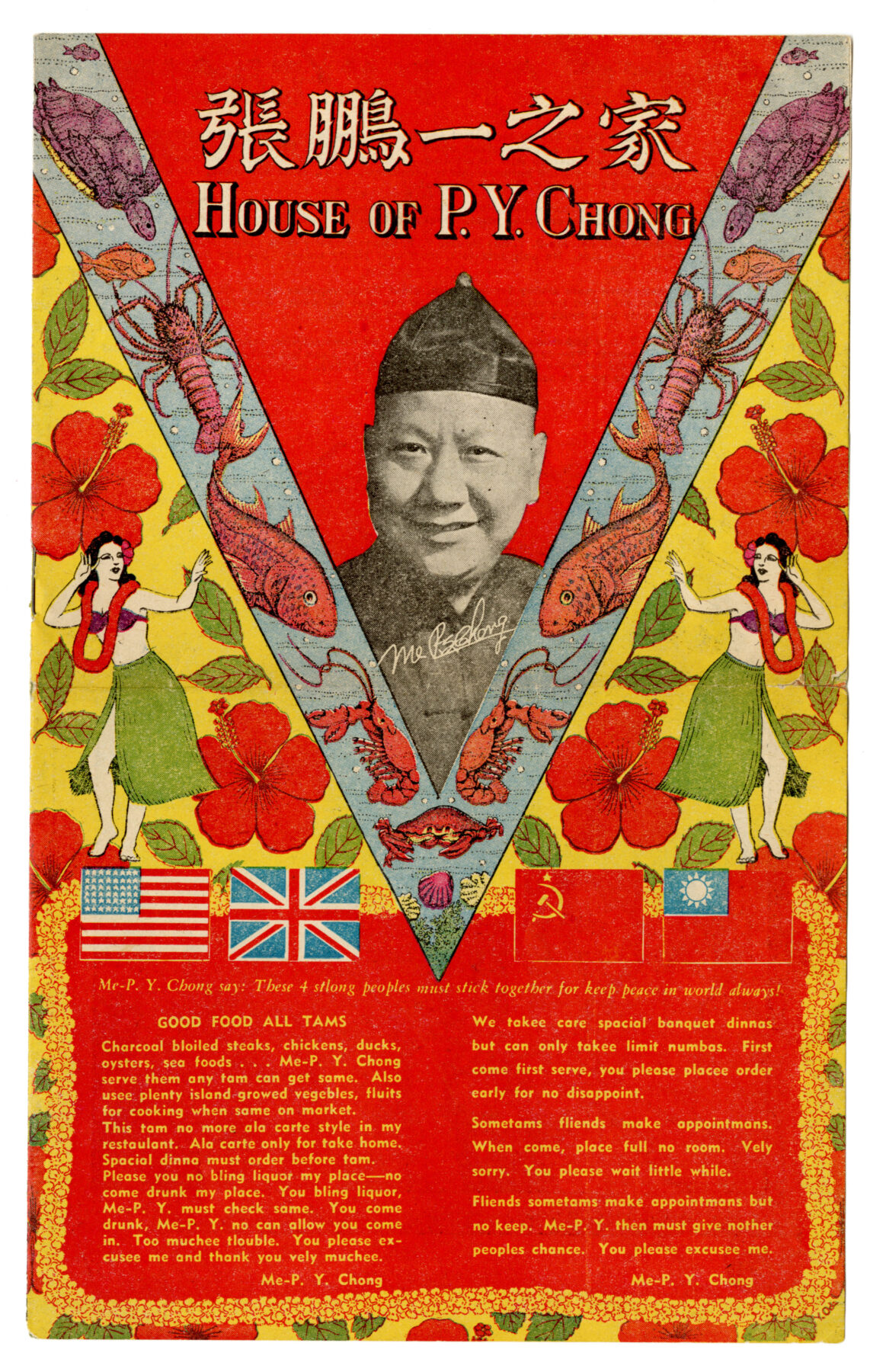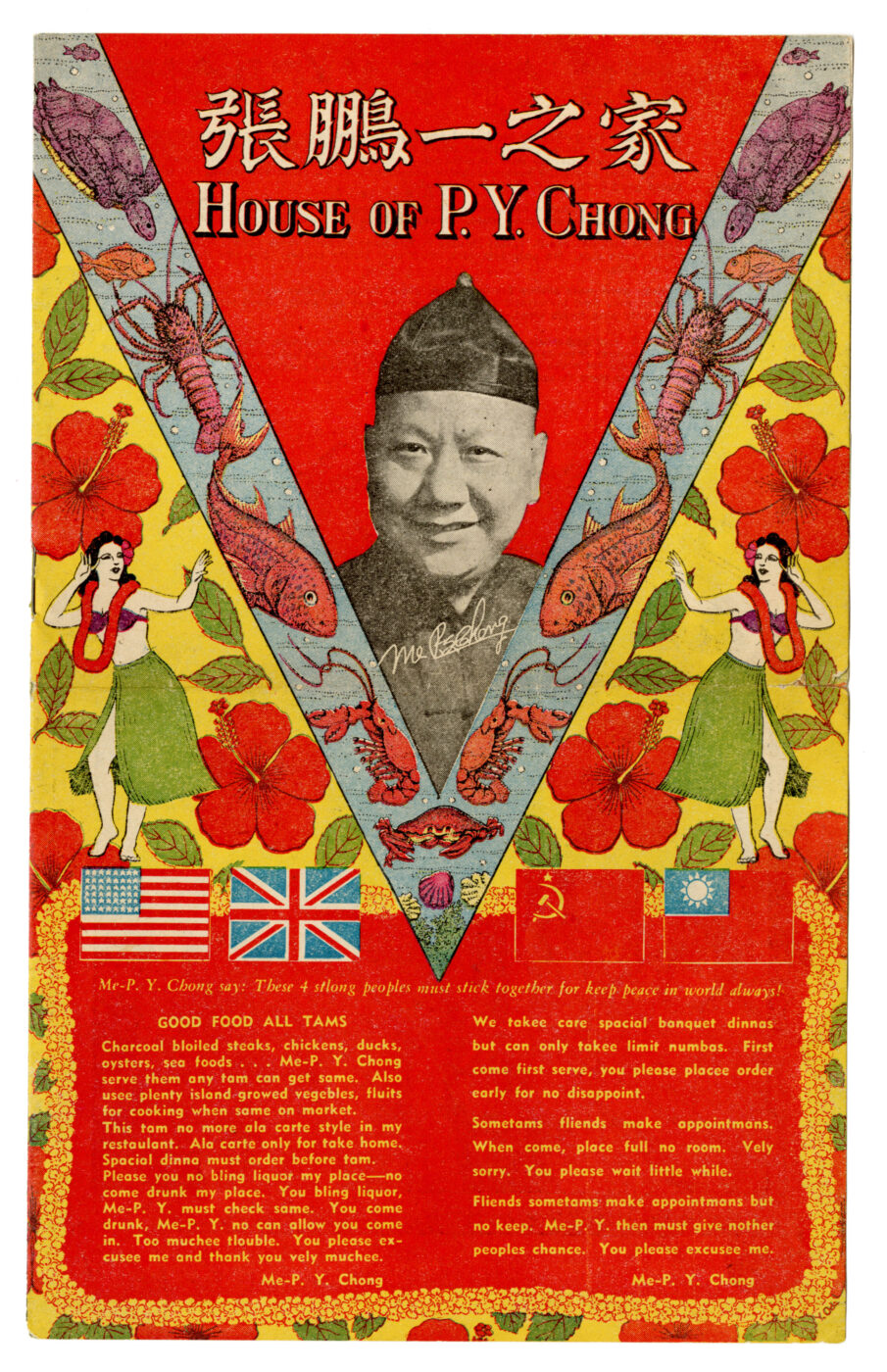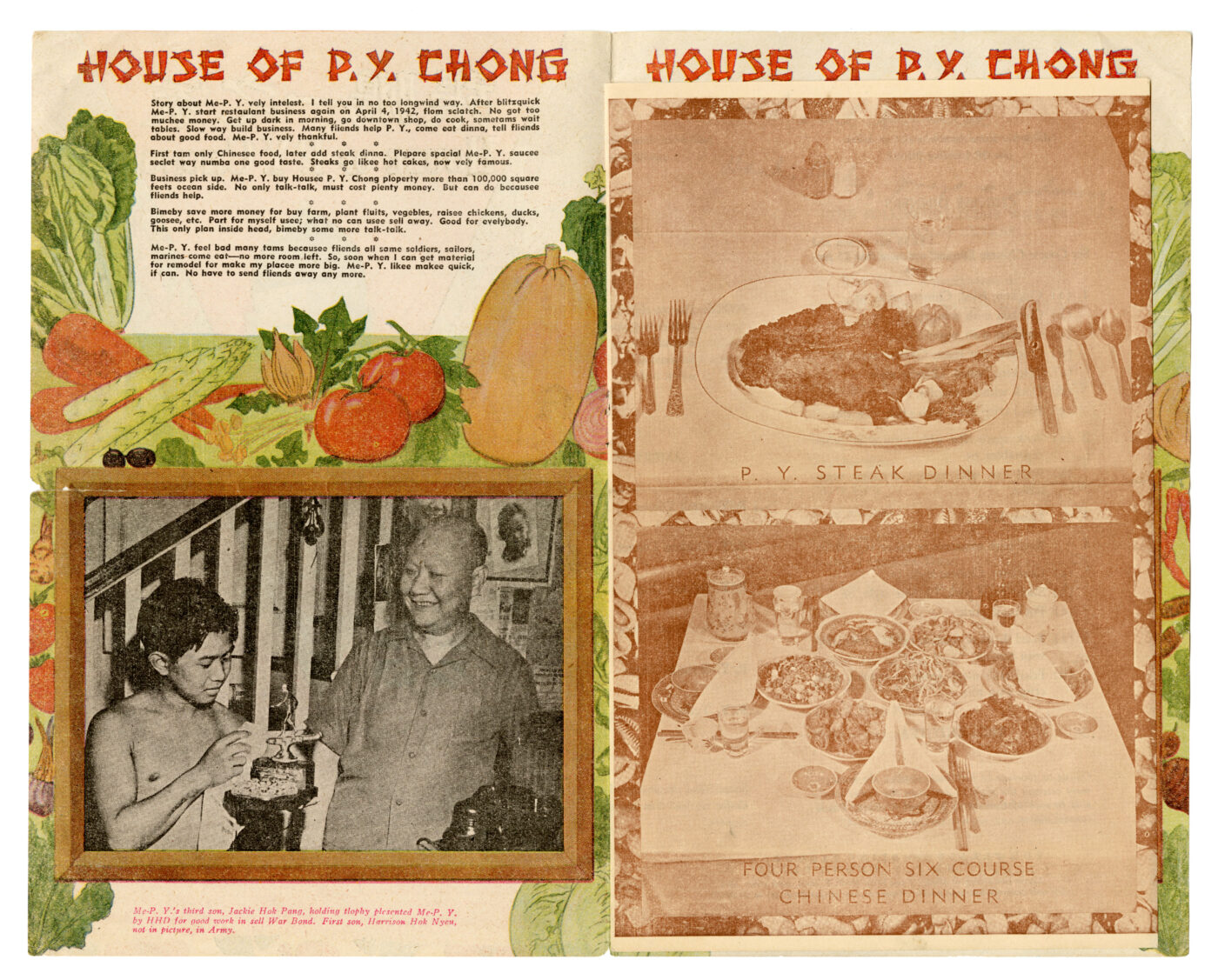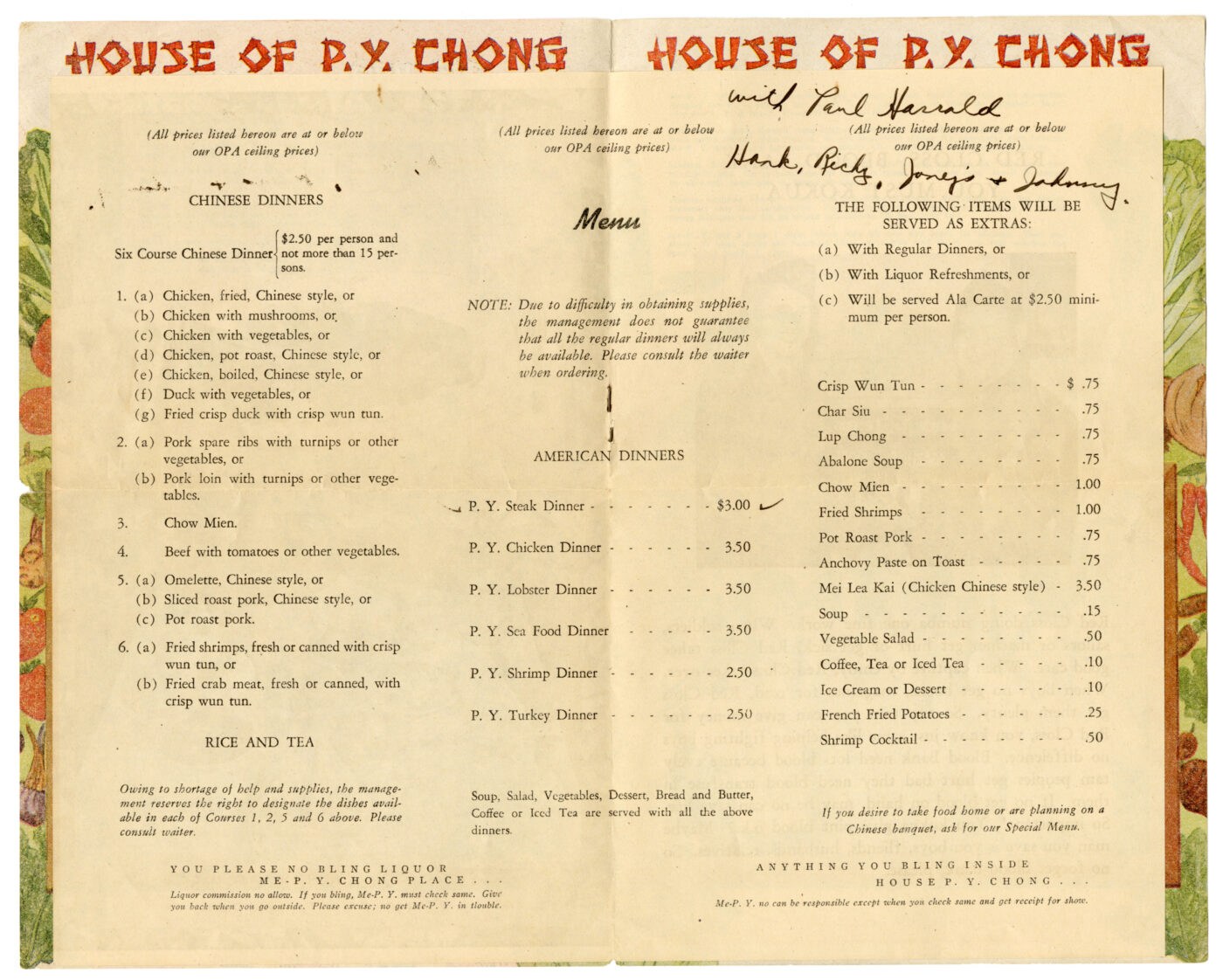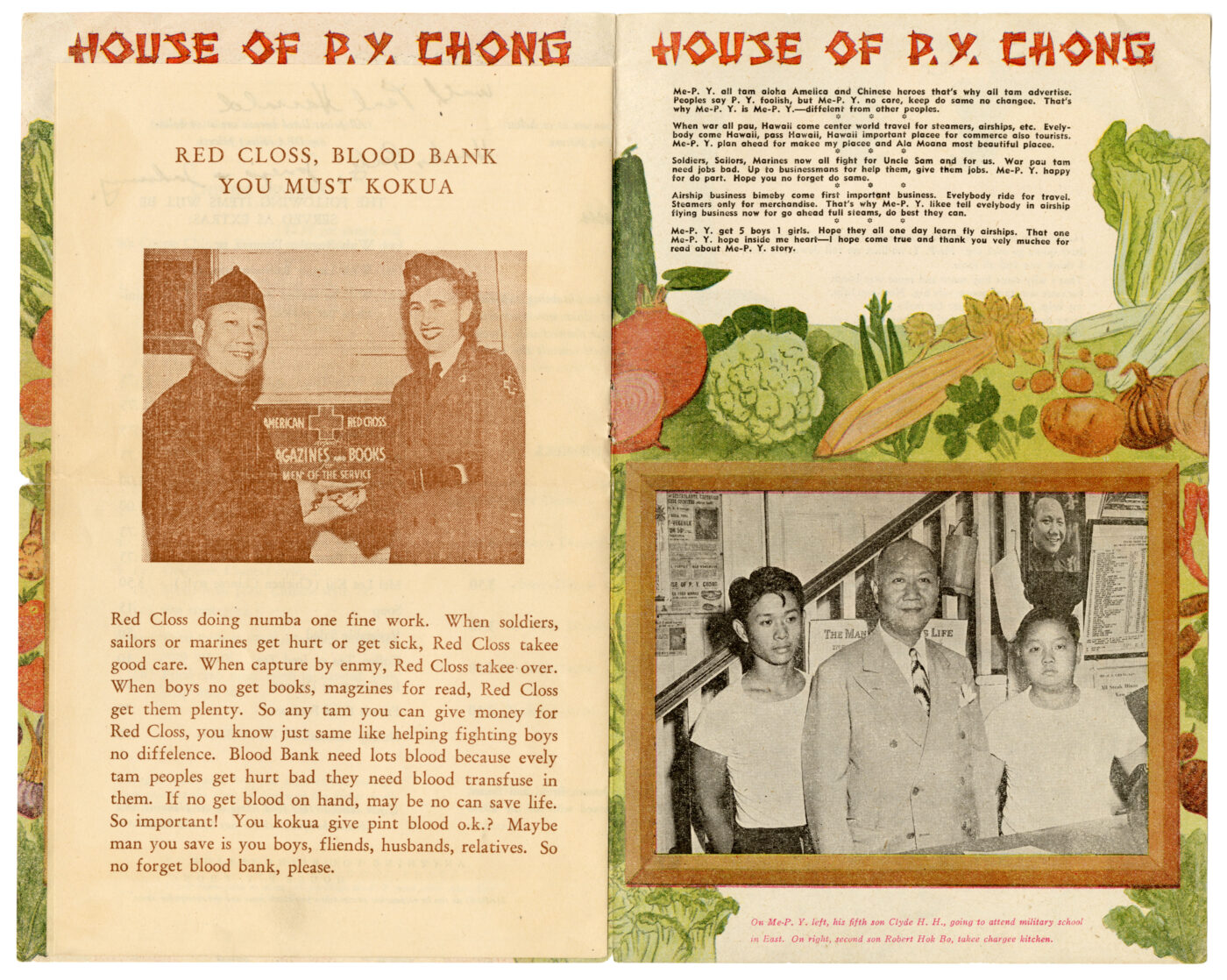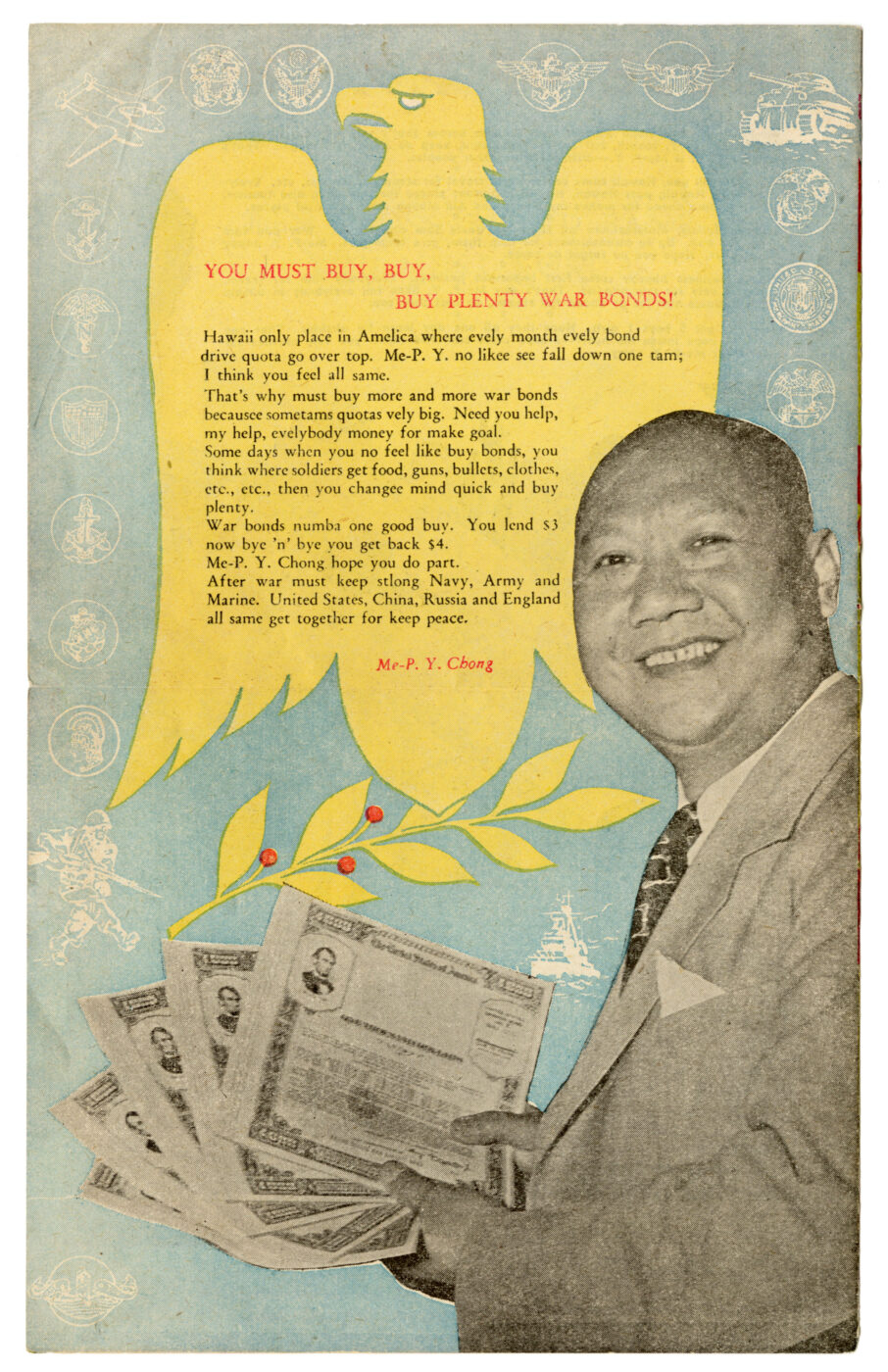This week we feature an interesting Hawaiian Chinese restaurant menu from the World War II period gifted by Roy Delbyck. Measuring 9.5 x 6 inches, the menu provides fantastic imagery, wartime references, and interesting use of language. Right on the front cover, we see the restaurant’s name printed in both English and Chinese, with Me-P.Y. Chong’s picture surrounded by an assortment of sea animals and hula dancers. In the lower section of the menu, there are flags of the United States, Great Britain, the U.S.S.R., and the Republic of China. As a wartime restaurant menu, it most likely represents the Allied Powers of World War II. The language of the menu here also starts to read like the script to a Charlie Chan movie with poorly written English seemingly in a way that mimics the speech of a stereotypical Chinese individual with an inability to pronounce the English language. Examples include “R”’s being replaced with “L”’s and words removed to imitate poor grammar and sentence structure.
The pages within the menu tell a story of P.Y. Chong’s career as a restaurant worker and later owner and share information about his sons and their involvement with the U.S. armed forces. There are also images of his famous “P.Y. Steak Dinner” and “Four Person Six Course Chinese Dinner” as well as an image showing his involvement with the American Red Cross with a message that incorporates Hawaiian slang. The menu contents itself has an interesting assortment of Chinese and American dinner options as well as appetizers. There are many disclaimers on this menu, describing supply and labor shortages resulting in no guarantees for food availability, a warning about not bringing alcohol into the establishment, and another warning about personal belongings not being the responsibility of the establishment. There is also a sentence in each column of the menu ensuring that customers are paying a fair price, as established by the wartime Office of Price Administration. Overall, the contrast between the well-written disclaimers and food items and the poorly written narrative everywhere else on the menu is quite intriguing. While speculative, one might be inclined to suspect that the “Chinese English” might have been purposely utilized for marketing.
The back page of the menu is another showcase of his support for the war effort, with a picture of him holding what seems to be $1000 war bonds. He includes a message encouraging Hawaiians to continue to keep the bond quota up and purchase more war bonds to help the United States and the Allies.
